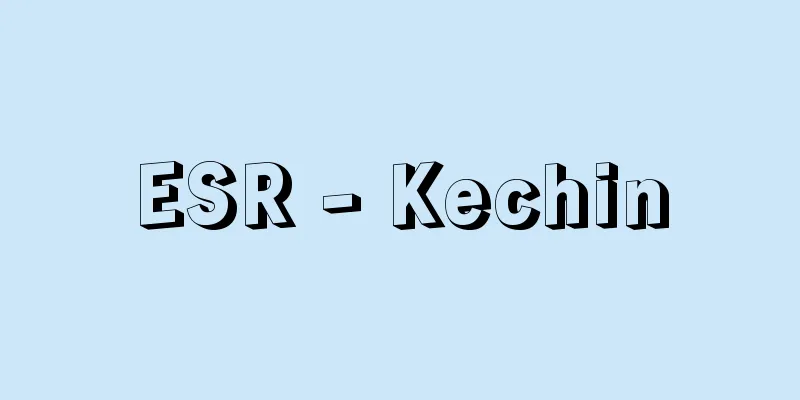Tea scoop - Chashaku

|
A long, thin spoon used to scoop matcha tea during the tea ceremony. It is mainly made of bamboo, but can also be made of ivory, wood, lacquerware, tortoiseshell, metal, or ceramic. It is generally around 20cm long, which is roughly the length of 13 tatami mats, but sometimes there are small ones to put in tea boxes. At first, ivory medicine spoons brought over from China were used, so there were various shapes such as long spoons and potato leaf shapes, but when Murata Juko established the soan tea style, a bamboo tea scoop was invented. The original tea scoops were knotless, imitating ivory, and were called the Jutoku type because they were made by a carver named Jutoku. Later, Takeno Jōō devised a shape with the joints left cut off, called the tomebushi shape, and Sen no Rikyu created a tea scoop with a joint in the middle of the scoop, which became the standard shape for tea scoops. Tea scoops with a middle joint are called sou tea scoops, and are used in general tea ceremonies today. Tea scoops made of ivory or without joints are called shin or gyo tea scoops, and are used in special tea ceremonies such as tenmokudate and karamonodate, but the way they are used varies slightly depending on the school and the preferences of the tea master. All tea scoops from Juko to Rikyu were covered in lacquer, and the tip of the scoop was a hida-me (fire-bending) kaisaki (point of the spoon) that was bent by fire. In the time of Rikyu's grandson Sen Sotan, scoops that were not lacquered began to appear, and it was from that time that the yuda-me (water bending) method of bending the scoop by immersing it in hot water began to be used. Most tea scoops are also placed in bamboo tubes. The tubes often have the maker's signature, signature, haiku (phrase), or poem inscription, as well as various other inscriptions depending on the taste, and it is common to appreciate the tube along with the tea scoop. [Kouichi Tsutsui] ©Katsuya Nishikawa "> Names of the various parts of a tea scoop Source: Shogakukan Encyclopedia Nipponica About Encyclopedia Nipponica Information | Legend |
|
茶道の点前(てまえ)で抹茶(まっちゃ)をすくう細長い匙(さじ)。素材は主として竹であるが、象牙(ぞうげ)、木地(きじ)、塗物(ぬりもの)、べっこう、金属、陶器などもある。長さはだいたい畳目(たたみめ)13目ほどの20センチメートル内外であるが、ときとして茶箱などに入れるための小型のものもある。最初は中国から伝来した象牙製の薬匙(やくじ)を使用していたため、長匙形、芋の葉形などまちまちであったが、村田珠光(じゅこう)による草庵(そうあん)茶の成立とともに竹製が創案された。当初の茶杓は象牙製を模した節(ふし)なしの茶杓であり、珠徳という名の下削り師につくらせたため、珠徳形といわれている。その後、武野紹鴎(じょうおう)によって節を切留(きりどめ)に残した止節(とめぶし)の形が考案され、千利休(せんのりきゅう)に至って杓の中間に節を置く中節形といわれる茶杓がつくりだされ、その形が茶杓の基本形として定着するようになった。中節の茶杓は草(そう)の茶杓とされ、現在では一般の点前で使用される。象牙や節なしの茶杓は真(しん)・行(ぎょう)の茶杓といわれて、天目点(てんもくだて)や唐物点(からものだて)などの特殊な点前に用いられることになっているが、流儀や茶人の好みによって使い方は少しずつ異なるのが現状である。珠光から利休のころまでの茶杓はすべて漆拭(うるしぶ)きされていて、杓の先は火によって折り撓(たわ)める火撓(ひだめ)の櫂先(かいさき)であった。利休の孫千宗旦(そうたん)の時代になって漆拭きをしないものが現れ、そのころから湯につけて折り撓めていく湯撓(ゆだめ)が行われるようになった。また茶杓のほとんどは竹製の筒に入れられている。筒には作者の署名や花押(かおう)、句銘や歌銘のほか、趣向によって各種の銘が書かれていることが多く、茶杓とともに筒も鑑賞するのが普通である。 [筒井紘一] ©西川勝也"> 茶杓の各部名称 出典 小学館 日本大百科全書(ニッポニカ)日本大百科全書(ニッポニカ)について 情報 | 凡例 |
<<: Tea and Wine Theory - Chashuron (English) Chá jiǔ lùn
Recommend
Red plum vinegar
Plum vinegar with red perilla leaves added. Red vi...
Chemical - Caustic
The number of generations that insects undergo in...
Auction - Versteigerung
A transaction in which many people bid competitive...
Crypsinus engleri (English spelling) Crypsinus engleri
…[Shigeyuki Mitsuda]. … *Some of the terminology ...
Chikka Deva Raja (English spelling)
…The kings of the state have had the title of Uda...
Brabançon (English spelling)
…A pet dog native to Belgium. There are two other...
Mr. Kono
A famous clan in Iyo Province (Ehime Prefecture)....
Rotational dispersion - Kaitenbunsan
[Synonym] Optical rotatory dispersion Source: Mor...
Pressure Die Casting - Pressure Die Casting
...A method of forcing molten metal into a precis...
Cosmochemistry - Cosmochemistry
A branch of chemistry that seeks to understand va...
Kashidonya - Wholesaler
…[Hodate Michihisa] Many riverbanks were newly es...
Ukimononari - Ukimononari
…Taxes can be broadly divided into the regular ta...
dodecamolybdophosphate
...MI4[P2Mo12O41 ] , MI3 [ PMo12O40 ] , MI6 [ P2M...
Liber judiciorum
This was the last legal code of the Visigothic Kin...
Buyer
…a merchant who is subordinate to a foreign capit...









